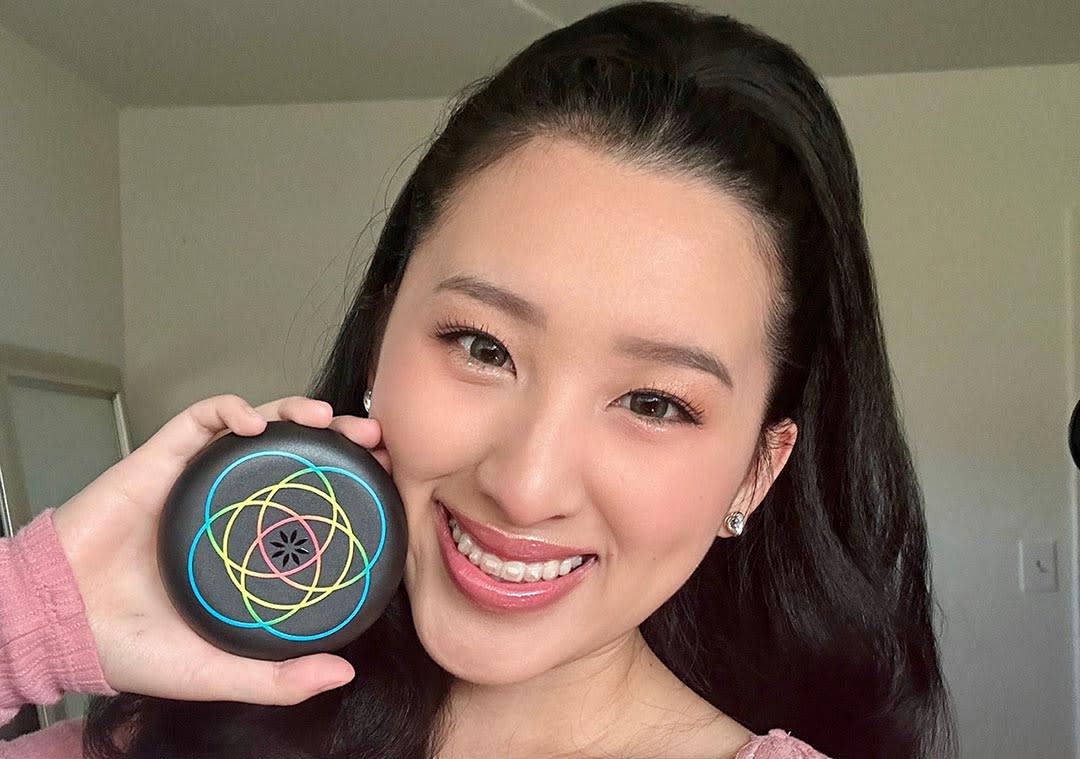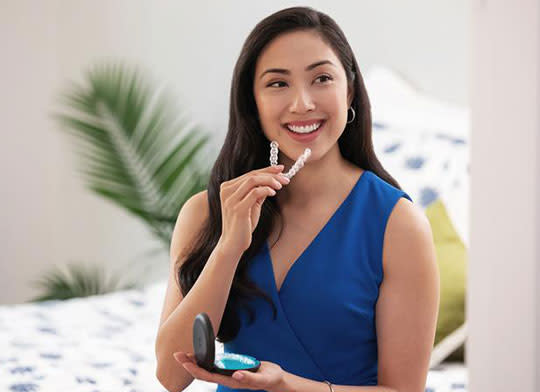Will people notice if I’m wearing SmartForce attachments?
SmartForce attachments are made from a tooth-colored material to be as discrete as possible. Some attachments may be more visible than others, depending on their location. For example, attachments on your front teeth may be easier to see than attachments on your molars.
If you have any concerns about the visibility of your attachments, talk to your orthodontist. Your orthodontist will do their best to place attachments in locations to minimize their visibility and make them less noticeable.
How are SmartForce attachments put on my teeth?
The process of applying SmartForce attachments is straightforward and should only take around 30 minutes to complete. Before applying attachments, your orthodontist or orthodontic assistant will review your ClinCheck® scan and note where the attachments are to be placed. Your teeth will be prepped by cleaning and drying them for the bonding agent that will allow for adhesion of the buttons to your teeth. Your dentist will use a template aligner, an appliance with little spaces where the attachments will go. They load the attachment material (composite resin) into the spaces and then place the template aligner, which now contains the attachment material, over your teeth. Then, the dentist applies gentle pressure to help the attachments properly adhere. Next, they use a special light to cure and harden the attachment material. Finally, they remove the template aligner and any extra bonding agent or composite resin.
Will they hurt?
You may experience some mild discomfort after initially getting your SmartForce attachments. That discomfort should not last long and can be expected to be mild. It's caused by your teeth needing time to adjust to the new pressure the attachments apply. It's completely normal and a sign that the treatment is working. In most cases, discomfort can be managed by over-the-counter pain relievers; your orthodontist can provide more information.
Can SmartForce attachments fall off? What do I do if that happens?
Avoid activities that put excessive pressure on teeth while in treatment. Activities like using your teeth as tools can cause SmartForce attachments to loosen or fall off.
Taking good care of your teeth, including regular brushing and flossing, can help preserve the bond and keep SmartForce attachments from coming loose. Also make sure you follow your orthodontist’s instructions regarding removing aligners safely.
If one of your SmartForce attachments does fall off, don't worry - simply contact your orthodontist. They will schedule a time to replace it.
How long will I need to wear SmartForce attachments?
The duration of time that you need to wear SmartForce attachments will also depend on your individual case. SmartForce attachments are bonded to the teeth and are typically kept on during your Invisalign treatment, which can last as little as six months. Your orthodontist will be able to provide you with a more accurate estimate of how long you will need to wear them based on your specific needs and desired outcome.
What happens when it's time to take my aligners off?
Your orthodontist will take off your SmartForce attachments at the end of your treatment. They are gently removed in a painless, non-invasive procedure. Before removal, your orthodontist will do one last check to confirm your teeth have moved into their desired positions.
Your orthodontist may want to take a new scan of your teeth after removing your SmartForce attachments. This will help with fabricating retainers you may need after treatment. Lastly, your orthodontist will give you specific instructions on caring for your teeth and retainers now that SmartForce attachments are removed and you have a healthy and beautiful bite and smile.





